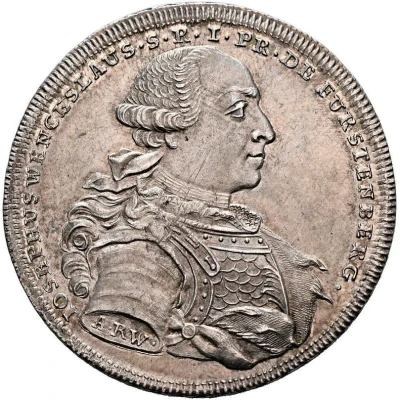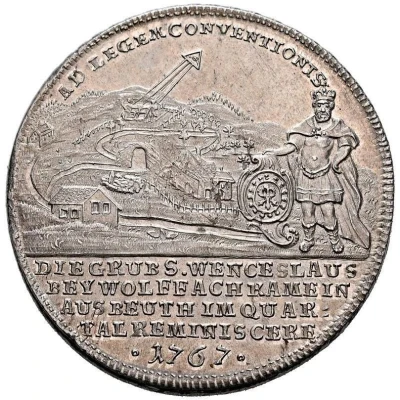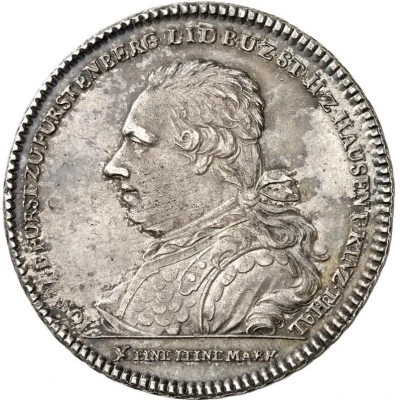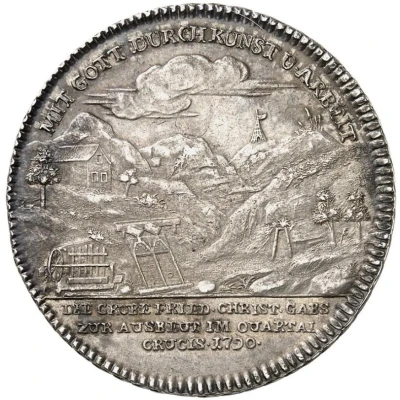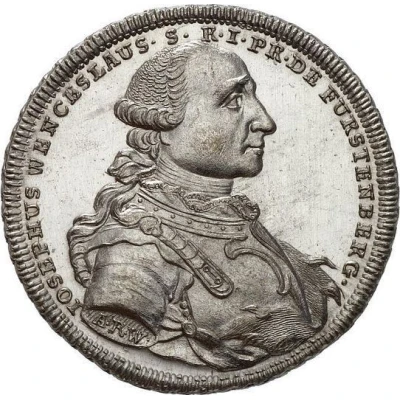
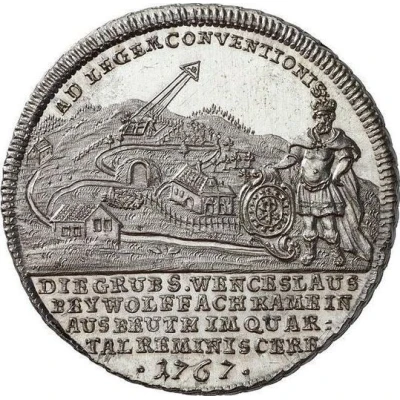

© Fritz Rudolf Künker GmbH & Co. KG, Osnabrück and Lübke & Wiedemann KG, Leonberg
1 Thaler - Joseph Wenzel
1767 year| Silver | 27.83 g | - |
| Issuer | Principality of Fürstenberg-Stühlingen (German States) |
|---|---|
| Prince | Joseph Wenzel (1762-1783) |
| Type | Standard circulation coin |
| Year | 1767 |
| Value | 1 Thaler |
| Currency | Thaler |
| Composition | Silver |
| Weight | 27.83 g |
| Shape | Round |
| Technique | Milled |
| Demonetized | Yes |
| Updated | 2024-10-05 |
| Numista | N#364618 |
|---|---|
| Rarity index | 100% |
Reverse
Mining scene with St. Wenzel to right, legend and date in exergue.
Script: Latin
Lettering:
AD LEGEM CONVENTIONIS
DIE. GRUB S. WENCESLAUS
BEY WOLFFACH KAME IN
AUSBEUTH IM QUAR
TAL REMINISCERE
• 1767 •
Comment
The Wenzel mine was operated sporadically from the 14th century until it was considered to be played out in 1823. One of the heaviest periods of activity began in 1760 under the leadership of Johann Martin Kapf, producing enough ore that the St. Wenzel Mining Company was founded in 1765. The largest ore deposit ever found in the mine was discovered in 1767, the year this piece was struck. It was a vein nearly 80 meters long and was excavated through 1771. As with most Löser produced during times of abundant ore production, this type would have been sold to a landowner with the express purpose of redemption back to the treasury in the event specie was required by war or crisis. (Source: the Cape Coral Collection of Multiple Talers)Interesting fact
One interesting fact about the 1 Thaler coin from the Principality of Fürstenberg-Stühlingen is that it features a unique design element - a small hole in the center of the coin. This hole was intentionally added to the coin to signify the value of the coin, as it was believed that the hole represented the "soul" of the coin, and that the value of the coin was tied to the presence of this hole. This design element was a distinct feature of coins from the Principality of Fürstenberg-Stühlingen and set them apart from other coins of the time.
